The Kesra with sourdough is a more digestible and aromatic version of the classic Algerian bread: it is easily kneaded with semolina and cooked in a pan, without the need for an oven.
This flatbread, originating from the Maghreb, is perfect for accompanying vegetable dishes, tagines, or simply enjoying with oil and olives. In my version, I use sourdough discard to get a Kesra that is soft inside and slightly crispy outside.
Preparing the Kesra with sourdough is a great way to make use of leftover sourdough and bring a simple, genuine, and historically rich bread to the table.
And there’s more: it’s the perfect solution for those who want homemade bread even when it’s hot because it’s cooked in a pan in just a few minutes, without turning on the oven. For a gluten-free version, scroll to the end of the recipe where you’ll find my friend’s version viaggiandomangiando
If you love simple, seasonal recipes based on natural leavening, you must try it!
Here are some of my recipes featuring sourdough discard that you can check out:
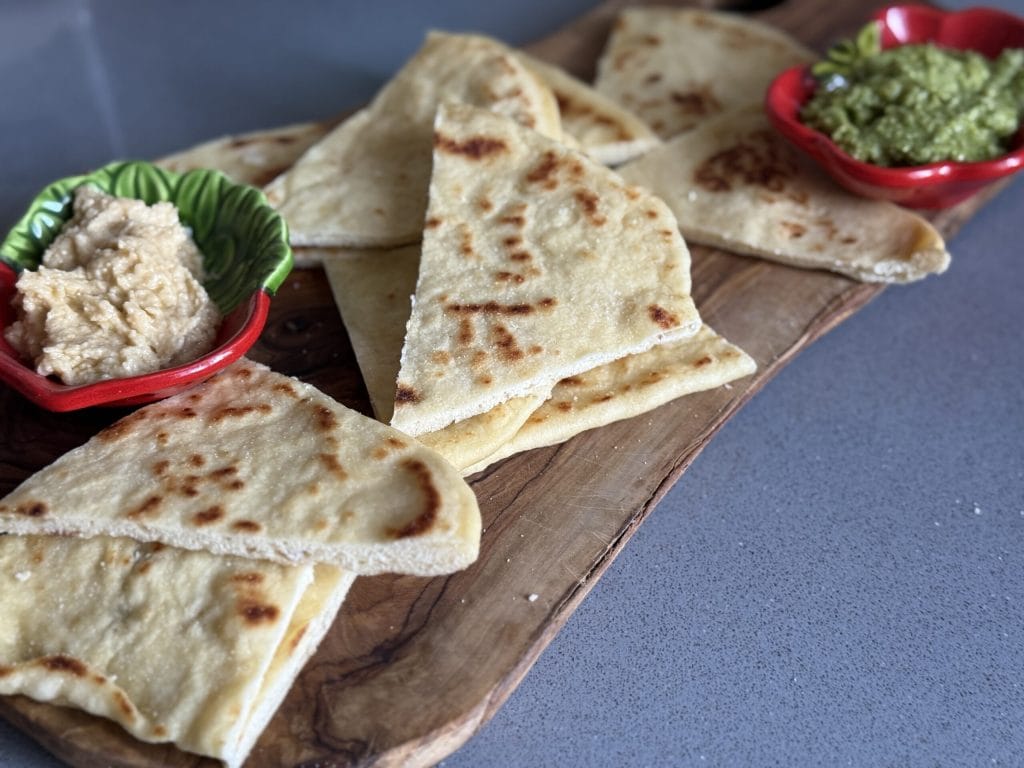
- Difficulty: Very Easy
- Cost: Very Cheap
- Rest time: 3 Hours
- Preparation time: 30 Minutes
- Portions: 4 Pieces
- Cooking methods: Stovetop
- Cuisine: African
- Seasonality: All Seasons
Ingredients
To prepare Kesra with sourdough we will use a few simple and genuine ingredients: semolina, strong flour, olive oil, salt, water, and, of course, sourdough discard.
The sourdough discard is the portion of sourdough that remains after a refresh: it is often discarded, but it is actually a valuable ingredient because it contains active cultures that help leaven and give aroma and flavor to the bread, although it’s used for items that don’t require much rise.
If you don’t have sourdough, no problem: there are different versions of Kesra made without yeast, using simply baking soda or baking powder, or without leavening agents for a more compact and traditional bread.
In this recipe, I propose the version with sourdough discard, perfect for getting soft, fragrant, and easy-to-digest Kesra.
- 6.35 oz remilled durum wheat semolina
- 4.23 oz all-purpose flour
- 3.5 oz sourdough (discard)
- 5.3 oz water
- 2.47 tbsp extra virgin olive oil
- 1 tsp barley malt (diastatic or sugar)
- 1 tsp fine salt
Tools
- 1 Stand Mixer
- 1 Bowl
- 1 Plastic Wrap
- 1 Board
- 1 Rolling Pin
- 1 Pan
- 1 Dough Scraper
Steps
Sift the all-purpose flour in a dish and mix it with the remilled durum wheat semolina.
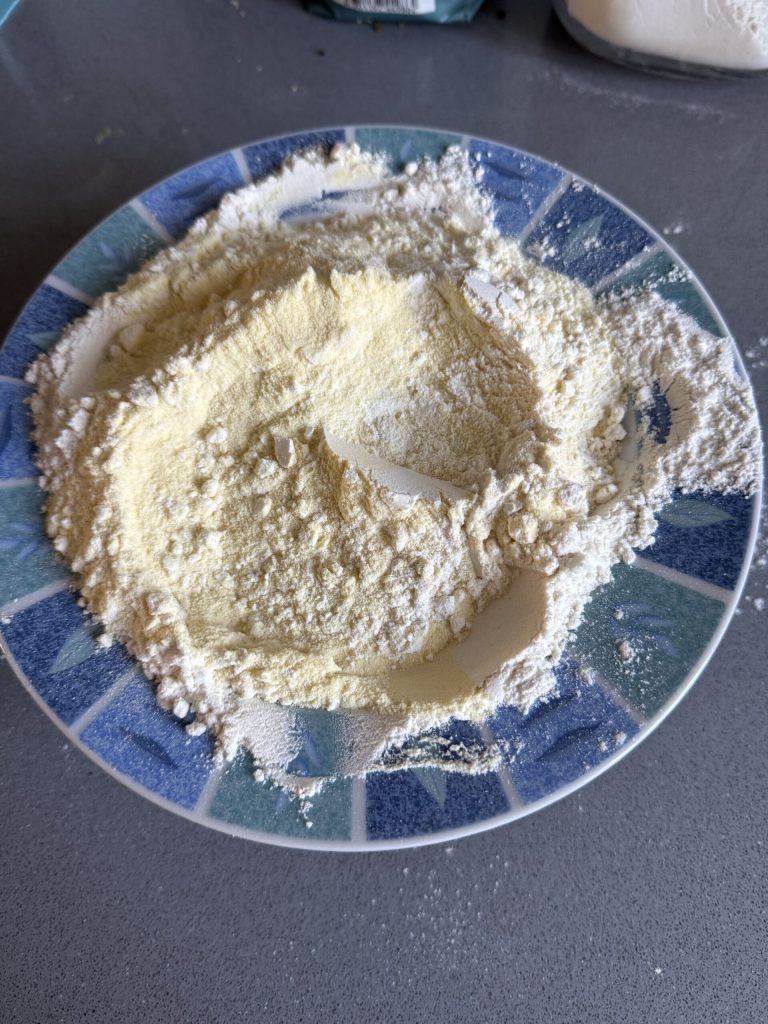
First, dissolve in the stand mixer, using the paddle attachment, the sourdough discard in about 50 g of lukewarm water along with a teaspoon of barley malt or, alternatively, sugar. This will help activate the remaining cultures present in the sourdough, enhancing the leavening and aroma of the bread.
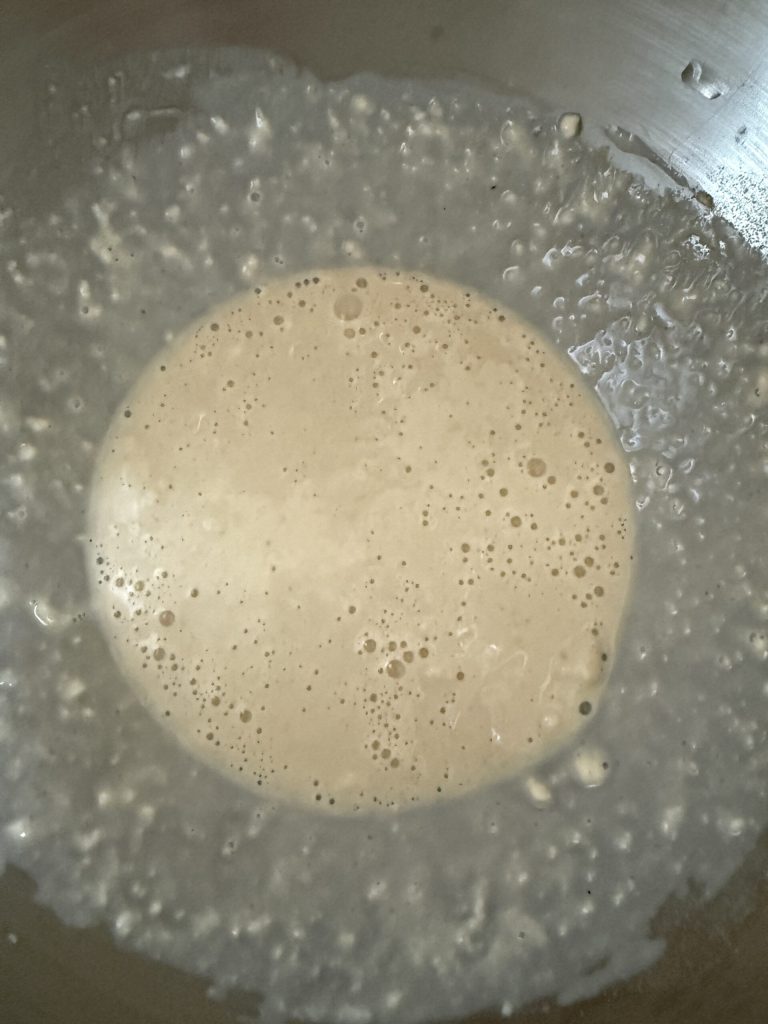
At this point, turn on the stand mixer with the paddle attachment and begin to add a portion of the semolina and strong flour mix. Continue alternating the addition of flour and water, little by little.
I divided the incorporation into three stages, so the dough can develop without becoming too heavy or dry. Don’t rush: let the mixer work slowly and absorb each addition well before pouring the next.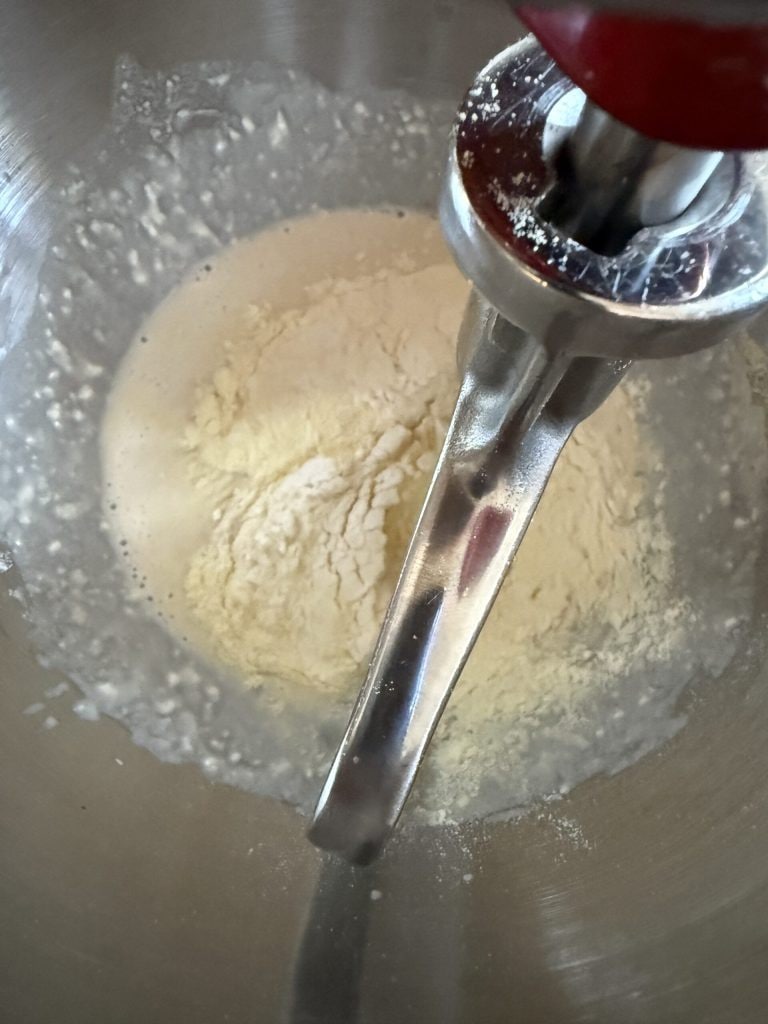
When you have finished all the flour and all the water, increase the speed a bit and allow the dough to become elastic. The sides of the mixer should become clean. You will get a soft and well-connected dough, ready for the oil.
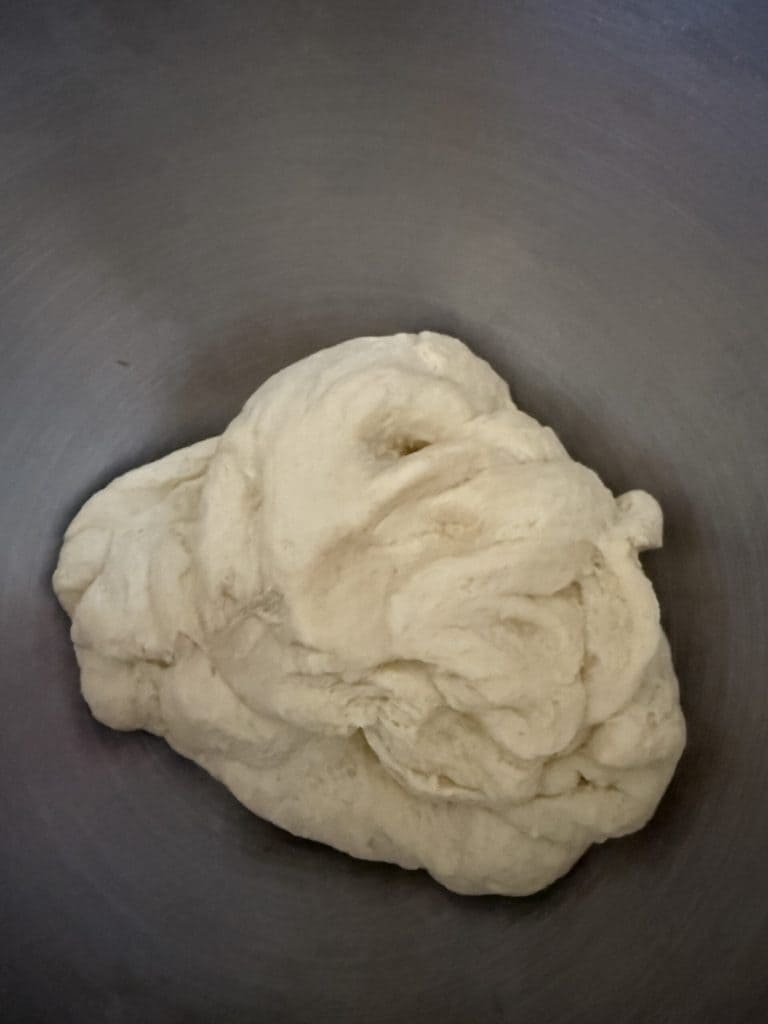
When the dough takes shape, replace the paddle with the dough hook and knead at medium speed, adding the extra virgin olive oil a little at a time, waiting for it to be absorbed before continuing. Increase the speed until you get a smooth and well-elastic dough. Finally, incorporate the salt and knead for a few more minutes.
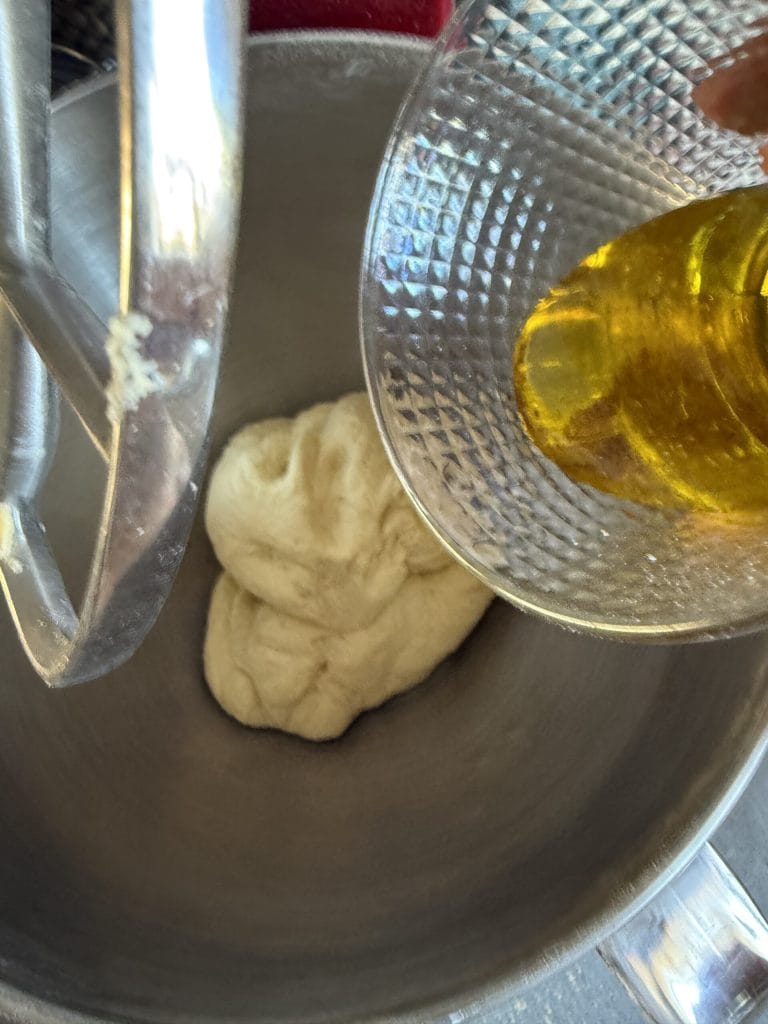
In the end, the dough should be like this: soft but not too much, tenacious, and not sticking to surfaces.
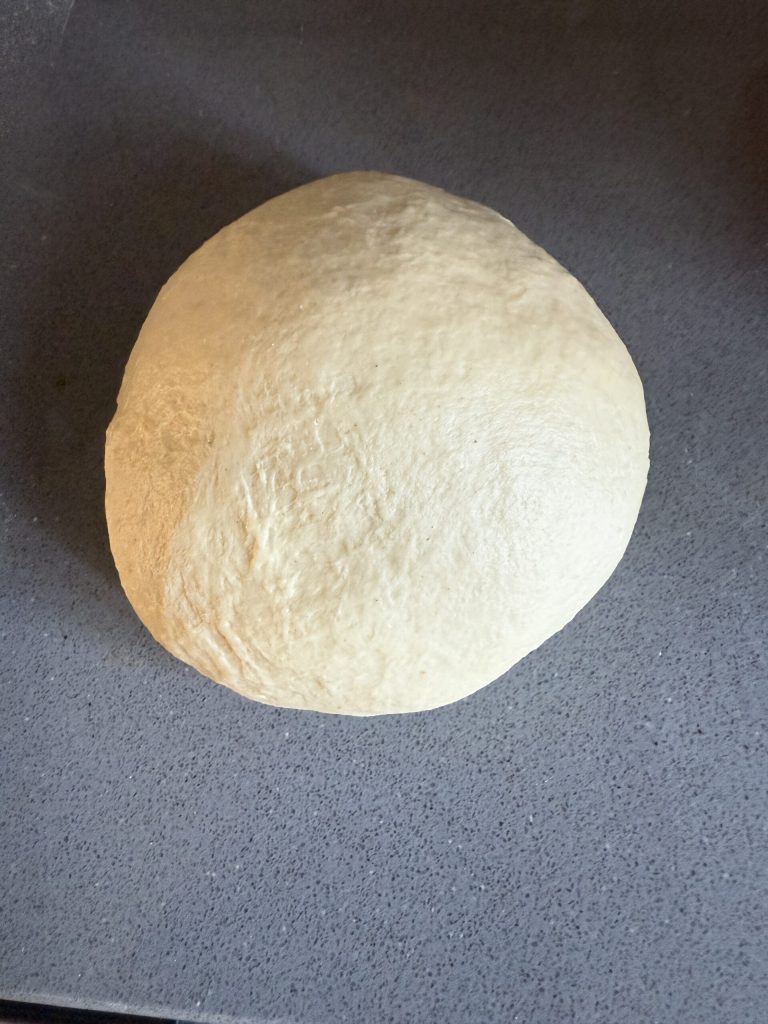
Transfer the dough to a lightly oiled bowl and cover it with plastic wrap or a lid. Let it rise at room temperature for at least 3–4 hours.
It is not necessary for the dough to double in volume: the Kesra with sourdough is, in fact, a flatbread, and does not require a long or noticeable rise. The important thing is that the dough relaxes and increases a bit in volume.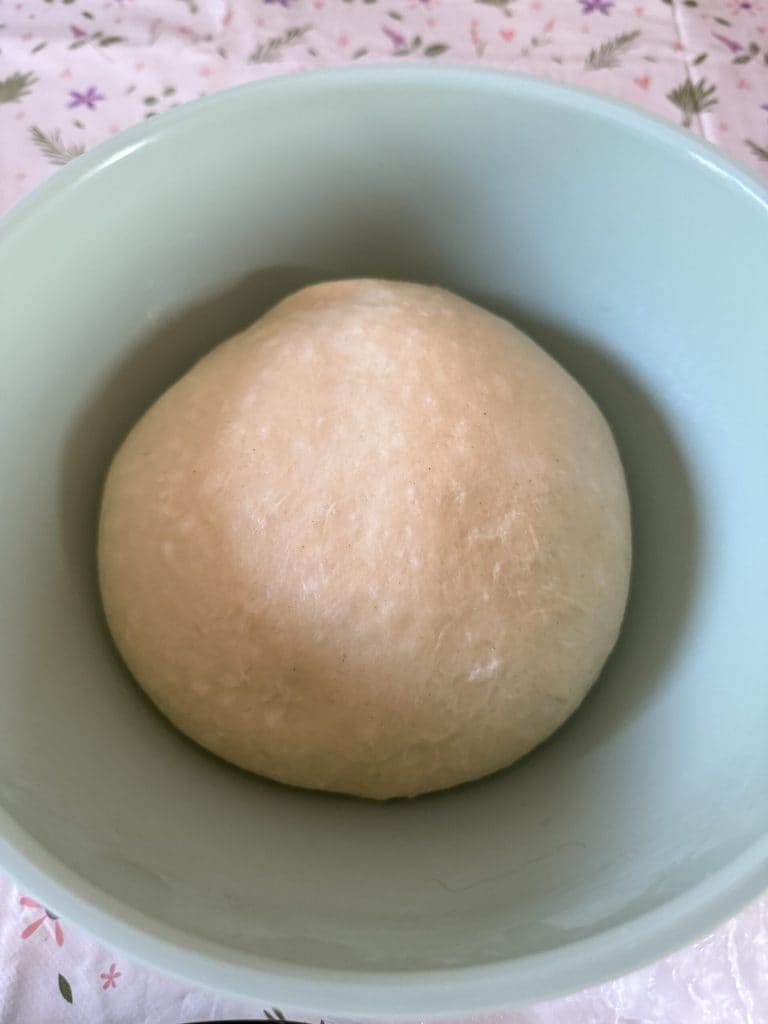
After the rising time, the dough will have risen slightly and will be softer and more supple to the touch.
Gently transfer it to a work surface dusted with rice flour or remilled semolina.
Avoid deflating the dough too much: handle it gently to not lose the air accumulated during the rise.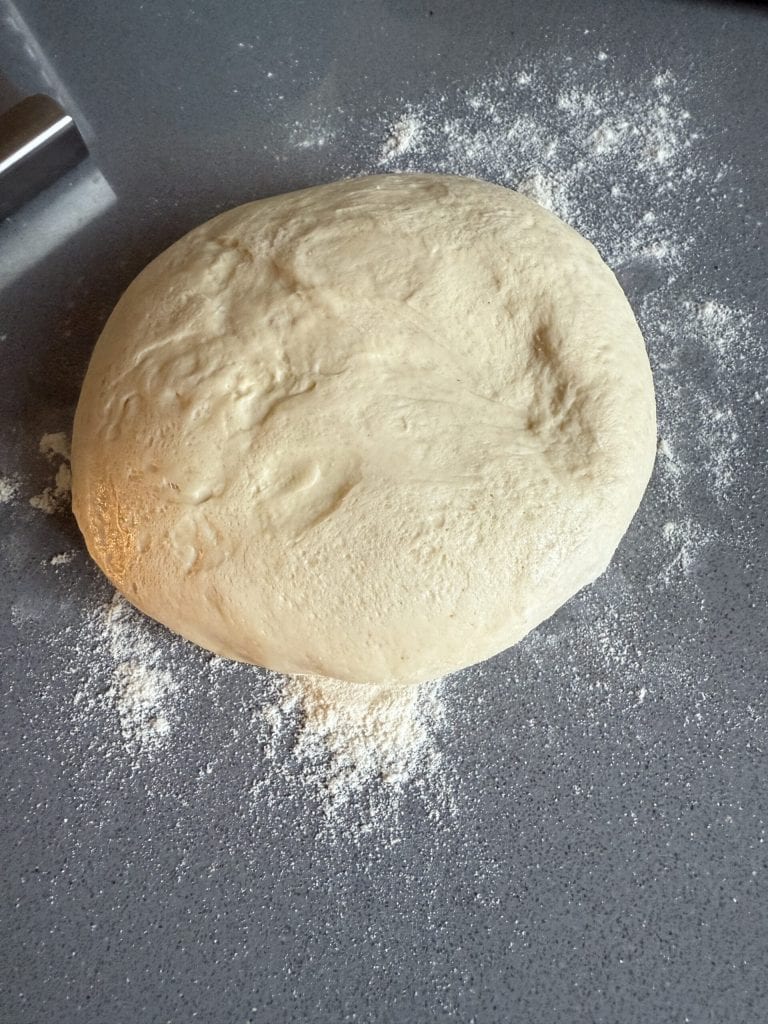
Using a scraper or a smooth-bladed knife, divide the dough into 4 equal parts. If you prefer, you can weigh them for more regular flatbreads, but eyeballing is also fine: the Kesra with sourdough is a rustic and homemade preparation, and a bit of irregularity is part of its charm.
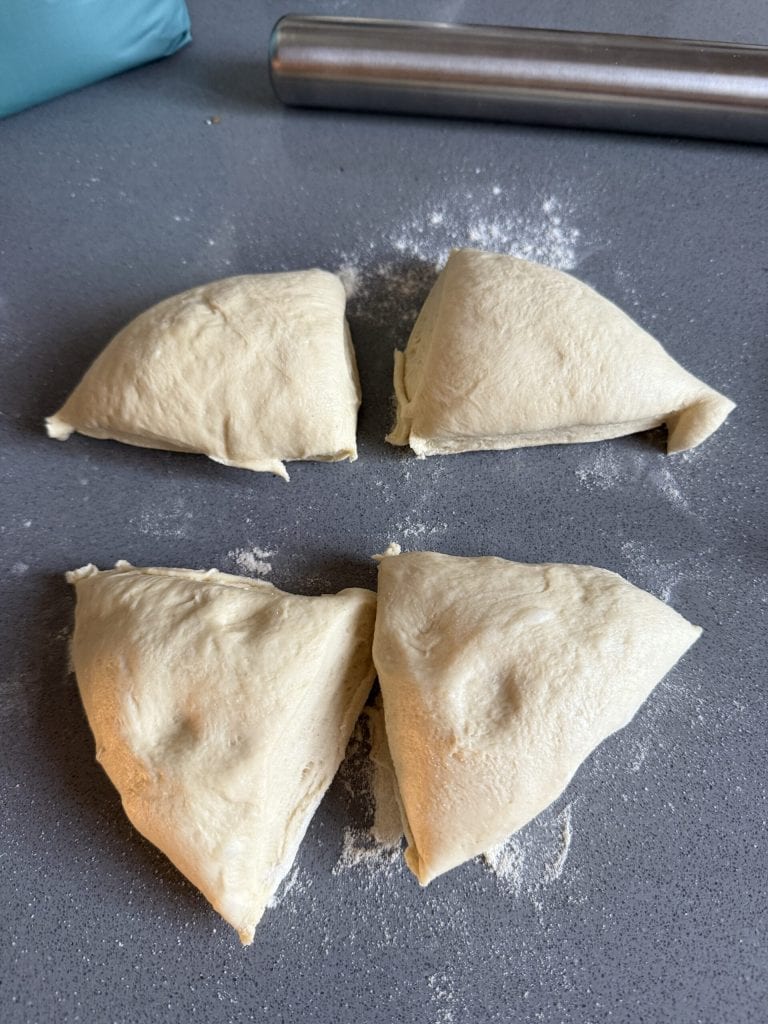
Take one portion of dough at a time and form a smooth ball by rounding the portions on the surface a couple of times. With the help of a rolling pin, start to roll it out gently on a floured surface.
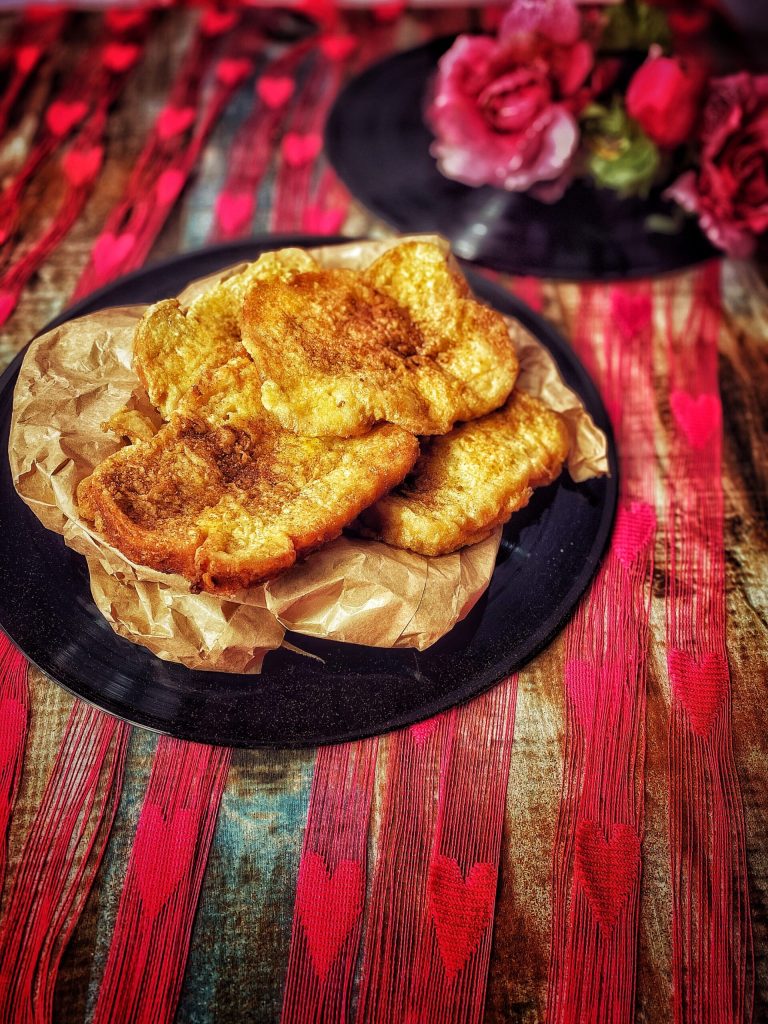
You don’t need to obtain a perfect shape: the Kesra with sourdough is a rustic and traditional bread, so an irregular shape is fine.
Once rolled out, the flatbreads should be kept well spread out and covered, to prevent them from drying out on the surface. You can place them on a tray or large plate, generously dusted with rice flour, to prevent them from sticking to each other or the base.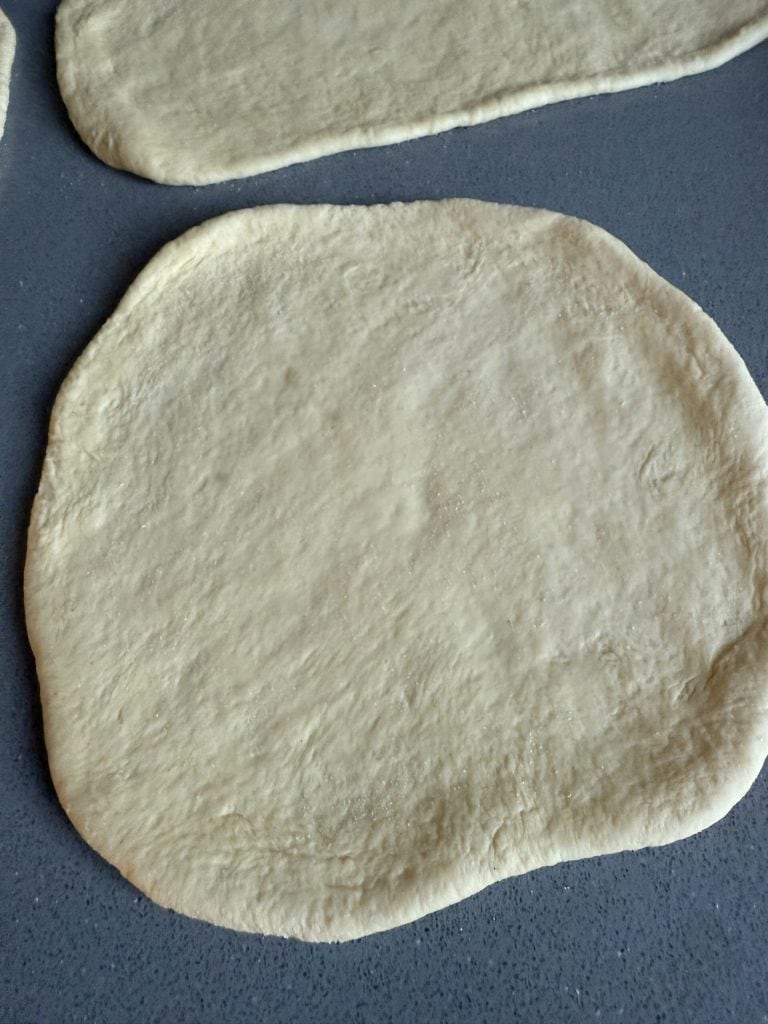
Heat a large non-stick pan over medium heat. When hot, lightly grease it with a bit of olive oil, rubbed with kitchen paper to distribute it evenly and without excess.
Place the first Kesra in the pan and, using the tines of a fork, lightly poke it on the surface: this will prevent it from puffing up too much and help achieve a more even cooking.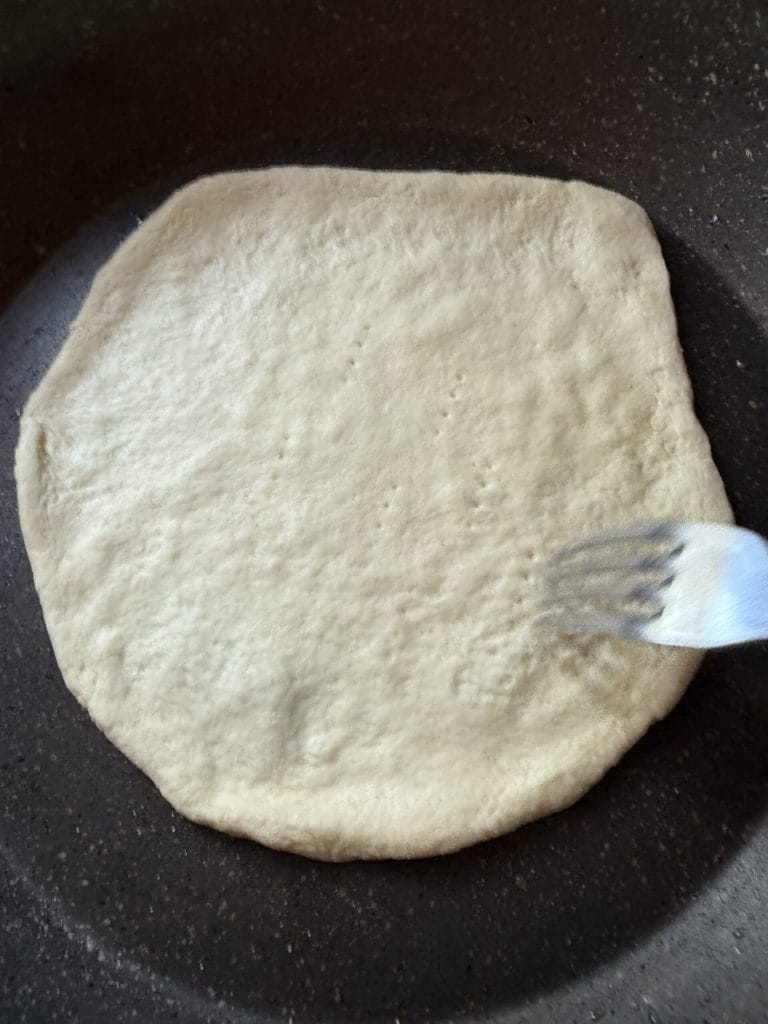
Cook the Kesra, checking the base often, to prevent burning. The heat should be lively but not too high: a moderate flame allows for even cooking and a golden crust without charring.
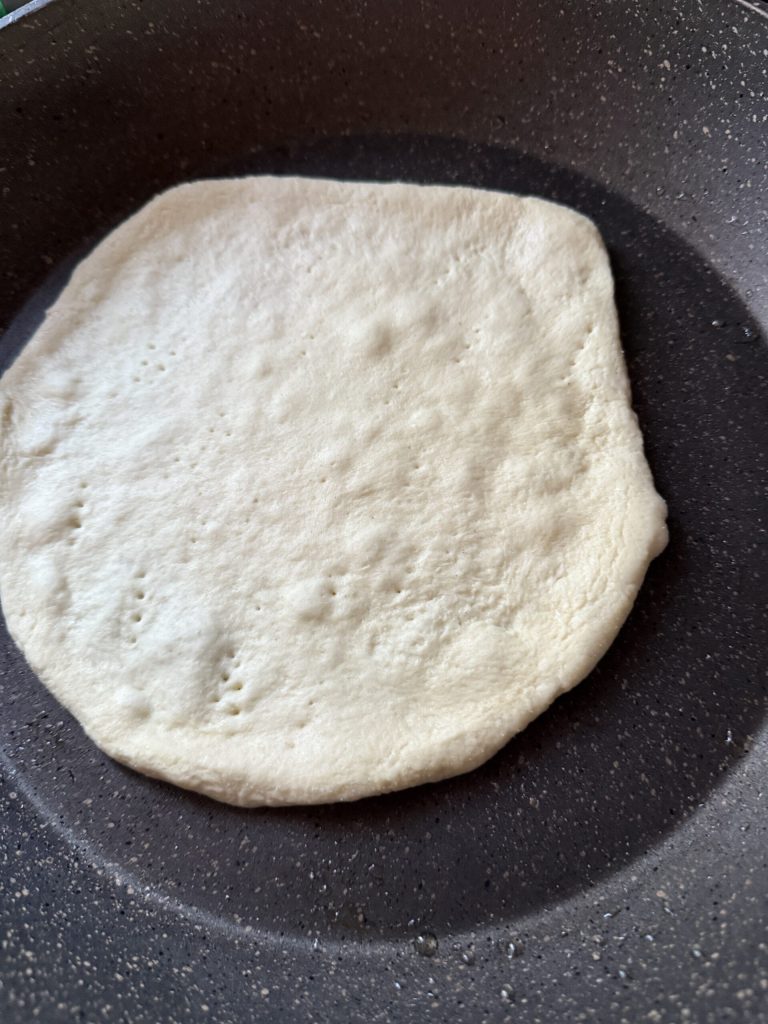
Flip it when the edges begin to color and the base is golden, continuing to cook it for another 3–4 minutes.
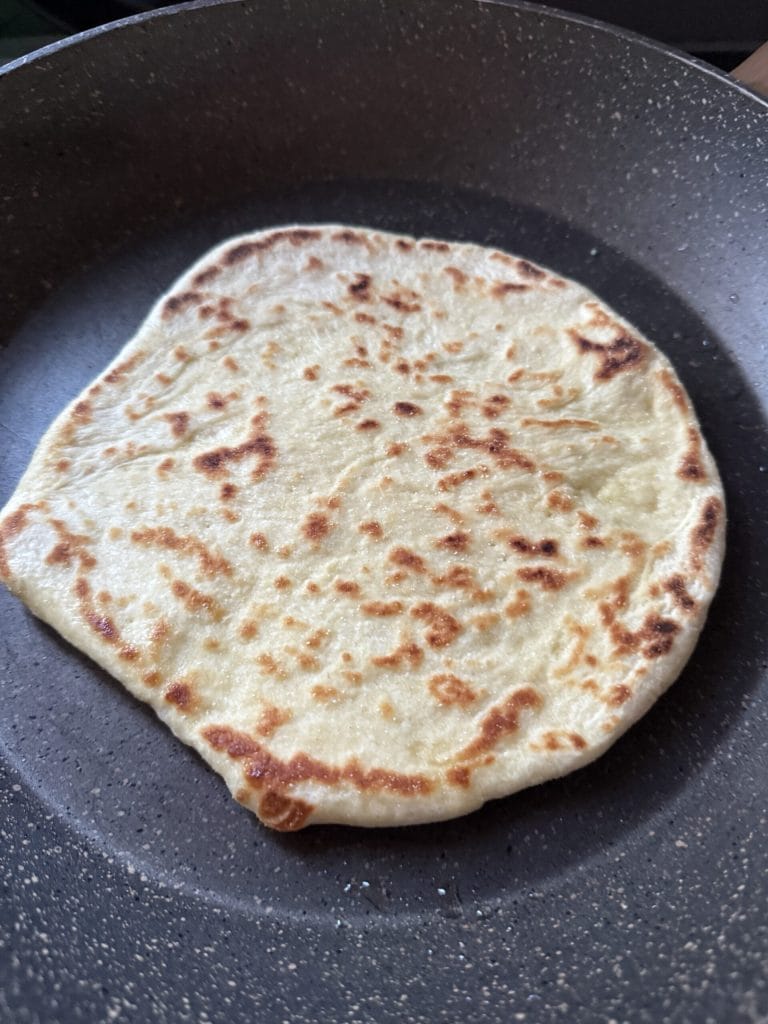
As you cook each Kesra, stack them gently on a plate to maintain their warmth and softness.
When you have cooked all the flatbreads, they will be ready to enjoy, hot and fragrant.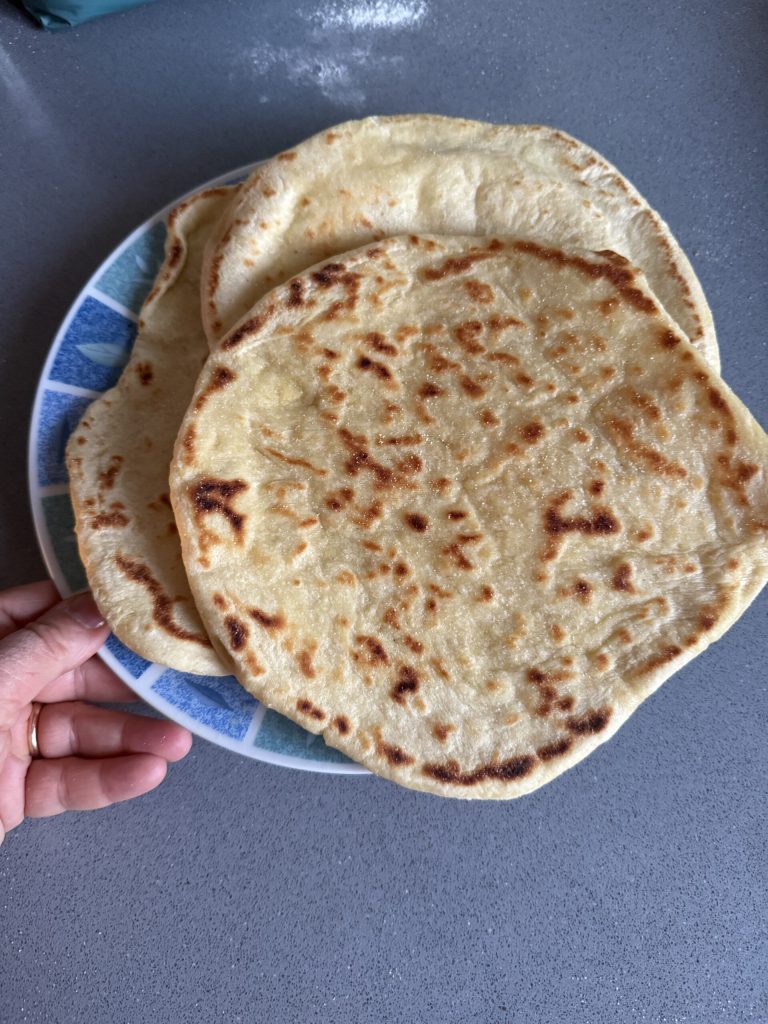
The Kesra with sourdough is such a versatile recipe that it can easily be adapted into a gluten-free version.
My friend Selene created a delightful variant using her rice sourdough and cornmeal, obtaining an aromatic flatbread perfect even for those intolerant to gluten.
👉 To discover her step-by-step recipe, I invite you to visit her blog: you can find it HERE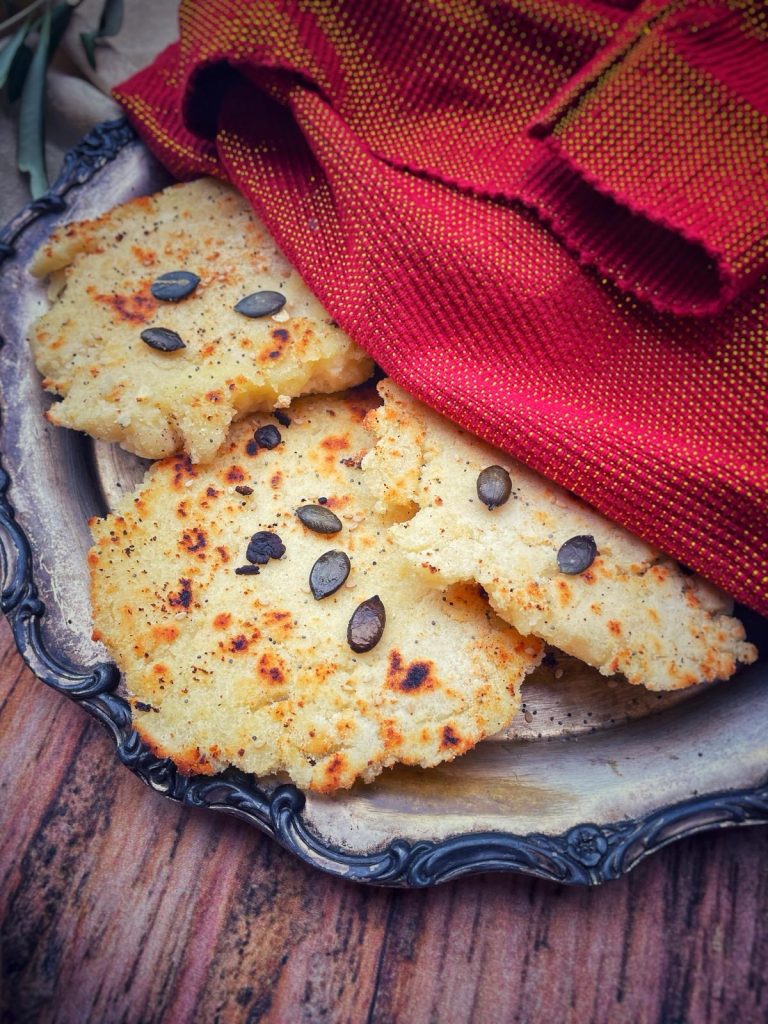
The Kesra is traditionally enjoyed with meat stews or used as bread to scoop up hummus and sauces, according to Algerian tradition.
I cut it into triangles for an aperitif, serving it with hummus and a fresh lemon and basil pesto. This simple pairing enhances the fragrance and softness of the Kesra, making it perfect as finger food.
If you want to try a homemade bread that is genuine and rich in history, don’t miss this recipe for Kesra with sourdough: easy to prepare and delicious to enjoy!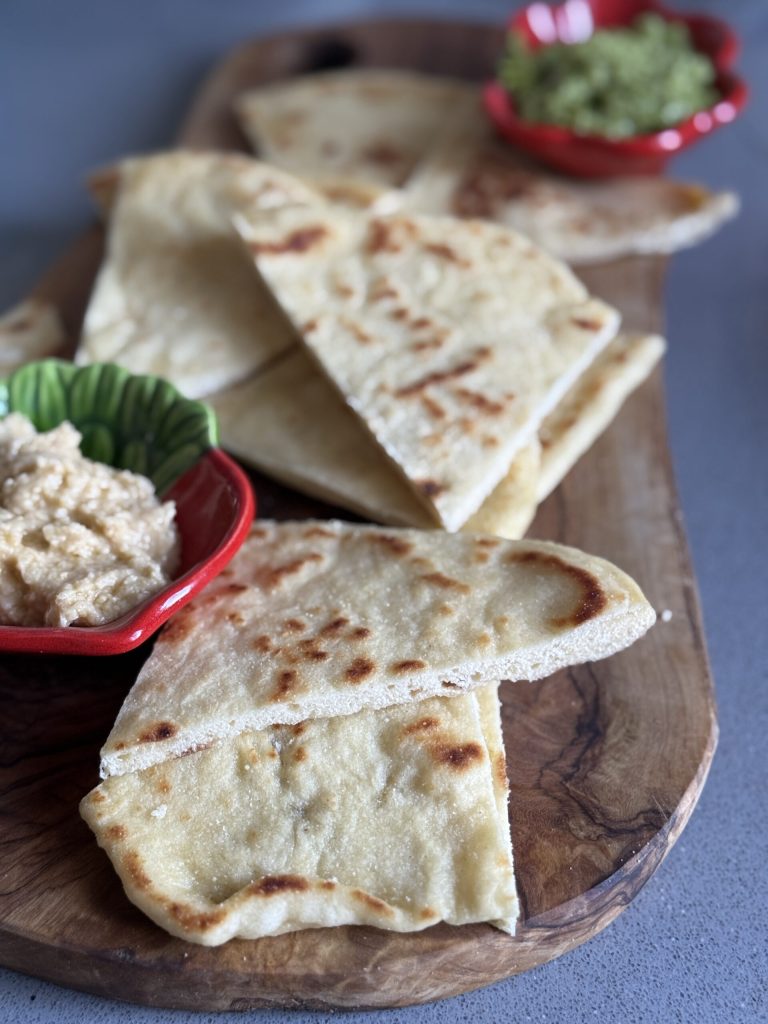
How to store Kesra with sourdough?
The Kesra with sourdough can be stored at room temperature, covered, for a couple of days, but it tends to dry out quickly. To keep it longer, cut it into triangles, place them in a zipper bag, and store in the refrigerator for up to a week. You can also freeze it, portioned and well-sealed: to consume it, just defrost and reheat in a pan or oven.
By following these storage tips, you can enjoy your homemade Kesra always fresh and fragrant, without waste.


